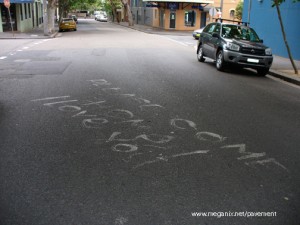In Sydney’s Angel Place, Michael Thomas Hill wants us to experience longing for nature long since lost and destroyed. His ‘Forgotten Songs’ installation charms us with its hanging bird cages and piped calls of native birds. But the sting is on the roadway where brass plaques inform us that the birds we are listening to “once sang in central Sydney, before Europeans settled and gradually forced them away”. The list of bird names inscribed there is like a wartime honour roll that we should follow along the laneway, lest we forget. The name label for the Regent Honeyeater is coincidentally positioned beside a manhole cover that, if opened up, would reveal the Tank Stream coursing beneath the lane in its modern-day guise as a stormwater pipe. Not only have trees been felled, Hill is reminding us, but the natural features of the landscape have been obliterated by the pavement itself.
But be careful what you want us to wish for, Michael. Regret the loss of charming songbirds and what do we get instead? Squadrons of honking ibis – swampland birds that have flown back from the countryside to learn the art of city living. Street smart and urban savvy, these scavengers revel in consumerism’s cast-offs.
Michael Thomas Hill’s ‘Forgotten songs’ installation belongs to a class of text-laden public artworks on the pavement that reproach us for wrongdoings past and present. I have written about these in an article called ‘Words of regret’ in Issue 3 of Sturgeon magazine, which has just hit the stands.
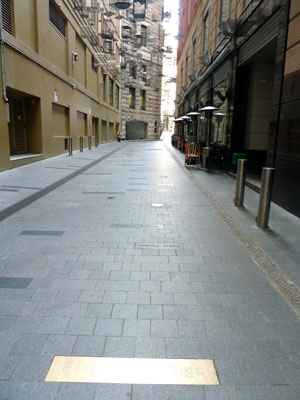

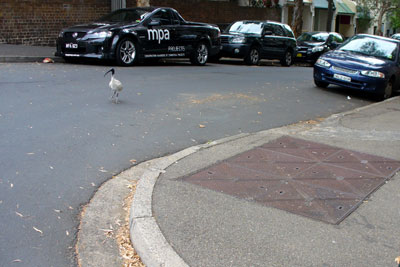
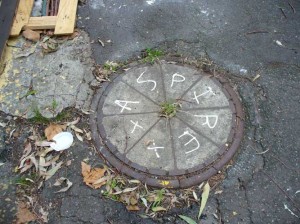
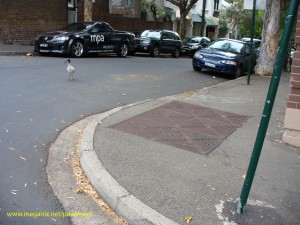
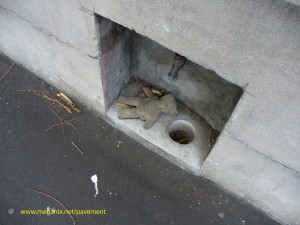
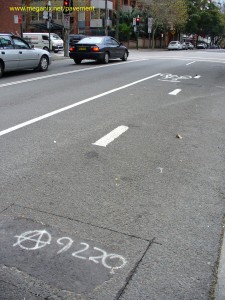
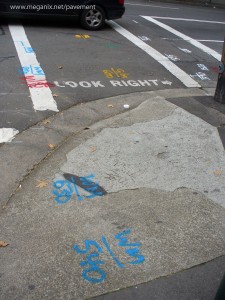
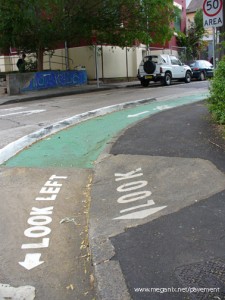

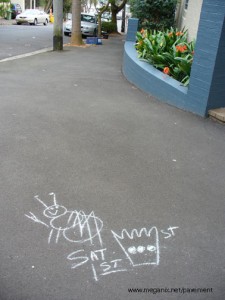 I figured this sign was not meant for me. Some private joke or invitation, but still I was intrigued. Sat 1st? Yes, I got that – the previous Saturday was August 1st. Queen Street? King Street? Crown Street? No streets of that name anywhere near this spot, the corner of Ross and Hereford Streets, Forest Lodge (Glebe). And as for the upbeat insect? Â No idea.
I figured this sign was not meant for me. Some private joke or invitation, but still I was intrigued. Sat 1st? Yes, I got that – the previous Saturday was August 1st. Queen Street? King Street? Crown Street? No streets of that name anywhere near this spot, the corner of Ross and Hereford Streets, Forest Lodge (Glebe). And as for the upbeat insect? Â No idea.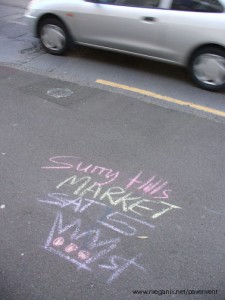
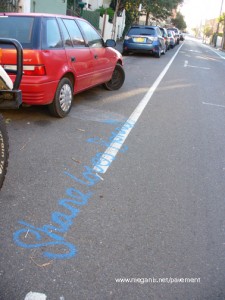 Every so often a large romantic message turns up on the pavement – sometimes on a country road, sometimes on a city street – turning private feelings into blaring headlines. Obviously premeditated and deliberately located so they will be seen by the object of affection (or disappointment), these messages can’t be compared with the miniature declarations of love made by wet cement opportunists. I believe they are generally written by males. Am I right?
Every so often a large romantic message turns up on the pavement – sometimes on a country road, sometimes on a city street – turning private feelings into blaring headlines. Obviously premeditated and deliberately located so they will be seen by the object of affection (or disappointment), these messages can’t be compared with the miniature declarations of love made by wet cement opportunists. I believe they are generally written by males. Am I right? 